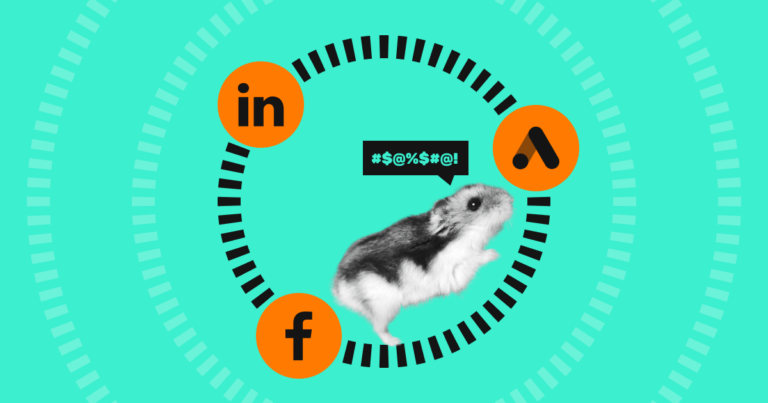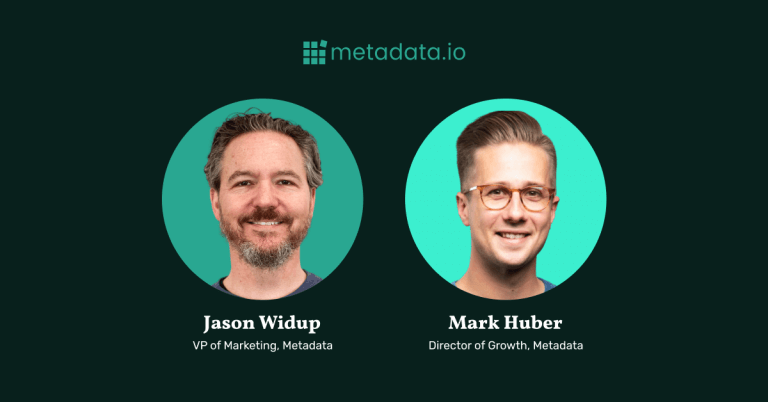13 Facebook Ads Best Practices for B2B Marketers to Boost ROI
Facebook Ads have become an essential tool for B2B marketers aiming to connect with decision-makers and influential stakeholders.
With its vast reach and detailed targeting options, Facebook offers B2B brands the opportunity to build awareness, generate leads, and foster long-term customer relationships.
In this article, we’ll break down different Facebook ads best practices to help you create impactful campaigns.
Best Practices for Audience Targeting
Effectively targeting B2B audiences using Facebook Ads requires a deep understanding of the platform’s unique capabilities and a strategic approach to leverage them.
While Facebook is commonly perceived as a B2C tool, its targeting options can serve B2B marketers well when used creatively.
Detailed Targeting Using Employee Categories
Facebook’s “More Categories” feature allows advertisers to segment audiences based on business attributes such as employer, company size, and job titles. This segmentation can help focus campaigns on small (10-200 employees), medium (200-500 employees), or large (500+ employees) enterprises, improving ad relevance for specific business sectors.
However, a significant challenge arises because many Facebook users do not regularly update their employment information, making it difficult to reach key decision-makers through native targeting options. This is where platforms like Metadata offer a valuable solution.
Metadata’s patented MetaMatch technology improves Facebook targeting by bridging the gap between personal and professional identities. Instead of relying on cookies or IP addresses, MetaMatch uses email addresses to connect personal emails to business profiles. This approach leverages a proprietary database of 800 million B2B profiles, allowing you to reach relevant business audiences even when their Facebook profiles lack current employment details.
Lookalike Audiences
Creating Lookalike Audiences is an effective strategy to expand your reach to potential customers who exhibit similar traits to your existing clients. Start by forming a Custom Audience using data from current customers, including information like lifetime value (LTV). Many marketers see success by testing 1% lookalikes first, ensuring they start with the closest matches, then gradually scaling for reach.
Layered Targeting
To maximize efficiency and ROI, consider integrating employee category targeting with lookalike strategies. This layered approach allows for a comprehensive targeting plan that covers different buyer journey stages, from reaching decision-makers by combining industry-specific interests to identifying potential high-value converts through lookalikes.
For instance, you might target people in the tech industry with job titles like “IT Manager” while also specifying behaviors related to cloud services. Layered targeting helps cover more ground and keeps your budget under control by ensuring your ads stay highly relevant.
Continuous Testing and Optimization
B2B marketers should prioritize continuous experimentation and refinement of their targeting strategies. This involves regular testing of audience segments and ad creatives to discern what resonates best with your target demographics.
But perfecting audience targeting can take a lot of time and testing. If you’re managing multiple campaigns, manually tweaking audience parameters can become overwhelming. Automation platforms like Metadata’s audience targeting tool can take care of this for you.
Metadata uses AI to experiment with different audience combinations, helping you zero in on the most effective targeting strategies quickly. Instead of trial and error, you get real-time insights on what works. This lets you focus more on creative strategies and scaling your campaigns without constantly adjusting targeting settings.
Best Practices for Ad Creatives and Messages
Creating scroll-stopping, high-performing Facebook ads is no easy feat—especially when you’re targeting business professionals who are bombarded with content every day. The key is balancing creativity with strategy. You need ad creatives that grab attention, communicate your message quickly, and prompt action without overwhelming the viewer.
Make Your Ads Visually Engaging
With endless posts and ads filling Facebook feeds, your ad needs to catch a user’s eye immediately. The goal is not to overwhelm but to create visually striking content that feels both creative and professional. Start with a focus on bold, contrasting colors and clean designs that match your brand identity. However, keep the layout simple—cluttered visuals confuse rather than engage.
Consider using images of people, particularly those that align with your audience’s professional context. Ads featuring relatable visuals, such as someone solving a relevant business problem, tend to capture attention more effectively than generic stock images. Also, don’t be afraid to experiment with animated formats like GIFs or short looping videos to further break through the noise.
Finally, ensure your visual style is consistent across your campaigns to build brand recognition. This doesn’t mean every ad must look identical, but keeping a consistent color palette, font style, and logo placement helps reinforce your brand presence without being intrusive.
Optimize Images and Videos for Mobile
With most Facebook users accessing the platform on mobile devices, check that your ads are mobile-friendly. Ads designed for desktop often fail on mobile, where text may get cropped and images may display incorrectly. To prevent this, always design with mobile-first principles in mind.
Using square or vertical formats is one of the most effective ways to maximize screen space. These formats naturally take up more real estate on mobile, making your ad more noticeable.
For video ads, capture attention within the first few seconds. Since many users browse with sound off, include subtitles or text overlays to convey your core message.
Focus on Clear, Concise Messaging
B2B marketers often struggle with overloading ads with too much information. While it’s tempting to include every feature and benefit of your product or service, too much text will overwhelm your audience. Instead, focus on delivering a single, clear message that highlights the key benefit your product offers.
Begin with an attention-grabbing headline that speaks to a common challenge your audience faces. For example, rather than saying, “Our software improves efficiency,” try something more specific like, “Cut your project timelines in half.” This creates curiosity and invites viewers to learn more.
Your call-to-action (CTA) should be direct and easy to understand, encouraging users to take the next step, whether that’s downloading a resource, signing up for a demo, or visiting your website.
Refresh Creatives to Avoid Ad Fatigue
Even the best-performing ad creative will eventually lose its effectiveness. When users repeatedly see the same ad, they become less likely to engage with it, a phenomenon known as ad fatigue. As performance declines, your CTRs drop, and your cost per action (CPA) rises.
To combat this, monitor campaign performance regularly and look for signs of diminishing engagement. Once performance starts slipping, introduce new creative elements. This doesn’t mean you need a complete overhaul—sometimes minor tweaks, like a different color scheme or a reworded headline, can reinvigorate your ad’s appeal.
Plan ahead by having multiple creative assets ready to deploy. Regularly update your ads based on insights from performance data and A/B tests.
Best Practices for Budget Allocation and Management
Effective budget management can make or break your Facebook ad campaigns. Spending too much too soon can waste resources on ineffective strategies, while underfunding limits your ability to gather meaningful data. The key is to manage your budget with flexibility and intent, ensuring every dollar serves a purpose.
Start Small and Use Data to Scale
Launching a campaign with a full budget can be risky because you haven’t yet identified what works. It’s smarter to start with a smaller test budget to observe how different audiences, creatives, and placements perform. This allows you to spot which elements drive engagement and conversions without wasting large amounts of money on unproven strategies.
For example, you might run tests on two audience segments—one focused on mid-level managers and the other on executives. If the executive audience shows better results, you can allocate more budget toward that segment and pause or adjust the weaker-performing group. Scaling based on actual performance data minimizes guesswork and improves efficiency.
Prioritize Budget by Campaign Goals
Different campaigns require different budget strategies based on their goals.
For example, brand awareness campaigns often focus on reaching large audiences, meaning you’ll allocate more budget to impressions and reach. On the other hand, lead generation or conversion-focused campaigns need tighter targeting and a higher CPA, which may require a more concentrated budget.
Understanding where your campaign fits within the marketing funnel will help you allocate resources more effectively. Campaigns near the top of the funnel typically require broader targeting and more budget to build awareness, while lower-funnel campaigns may focus on fewer, high-intent prospects but justify higher costs per lead or sale.
Be Ready to Adjust in Real Time
Budgeting isn’t a set-it-and-forget-it process. Facebook’s algorithm often takes a few days to optimize ad delivery based on performance, but once that data starts coming in, you need to monitor results and adjust accordingly. If a campaign is underperforming after a reasonable testing period, reallocate funds to better-performing ads or audiences.
Similarly, if an ad is driving results far better than expected, you can increase the budget to capitalize on the momentum. Use Facebook Ads Manager to track performance metrics and make regular adjustments based on this data to keep your campaigns running efficiently.
Avoid Overspending on Saturated Audiences
One common problem in B2B Facebook ads is audience saturation. If you target the same audience repeatedly, engagement will drop, and your CPA will rise as ad fatigue sets in. This can lead to diminishing returns even if the campaign was initially successful.
To prevent this, regularly monitor audience size and frequency (the number of times users see your ads). When frequency rises too high without corresponding conversions, it’s time to rotate in fresh creatives or expand your audience pool. Consider using Lookalike Audiences to scale reach without losing relevance.
Use Automated Budget Optimization Tools
Managing complex ad budgets manually can be time-consuming, especially when running multiple campaigns. Tools like Facebook’s Campaign Budget Optimization (CBO) help automate budget allocation by dynamically shifting funds toward the best-performing ad sets in real time. This feature is particularly helpful when you have limited resources and need to focus on strategy rather than constant adjustments.
Additionally, platforms like Metadata can provide advanced budget optimization across multiple channels, helping you identify opportunities to improve ROI by integrating audience and performance data from various sources.
Take Your B2B Marketing Further with Metadata.io
Running successful Facebook ad campaigns takes a lot of time and effort—testing audiences, optimizing creatives, and managing budgets. Metadata makes this process easier by automating key tasks like audience targeting and campaign optimization. Instead of spending hours on trial and error, you can focus on strategy and creative ideas.
With Metadata, you’ll reach the right decision-makers faster, generate more qualified leads, and improve your ROI without constant manual tweaking. Whether you’re scaling your campaigns or testing new tactics, our platform helps you achieve better results, faster.
Transform your marketing strategy with Metadata.io — drive more leads, optimize campaigns, and scale your results effortlessly. Book an intro today!


